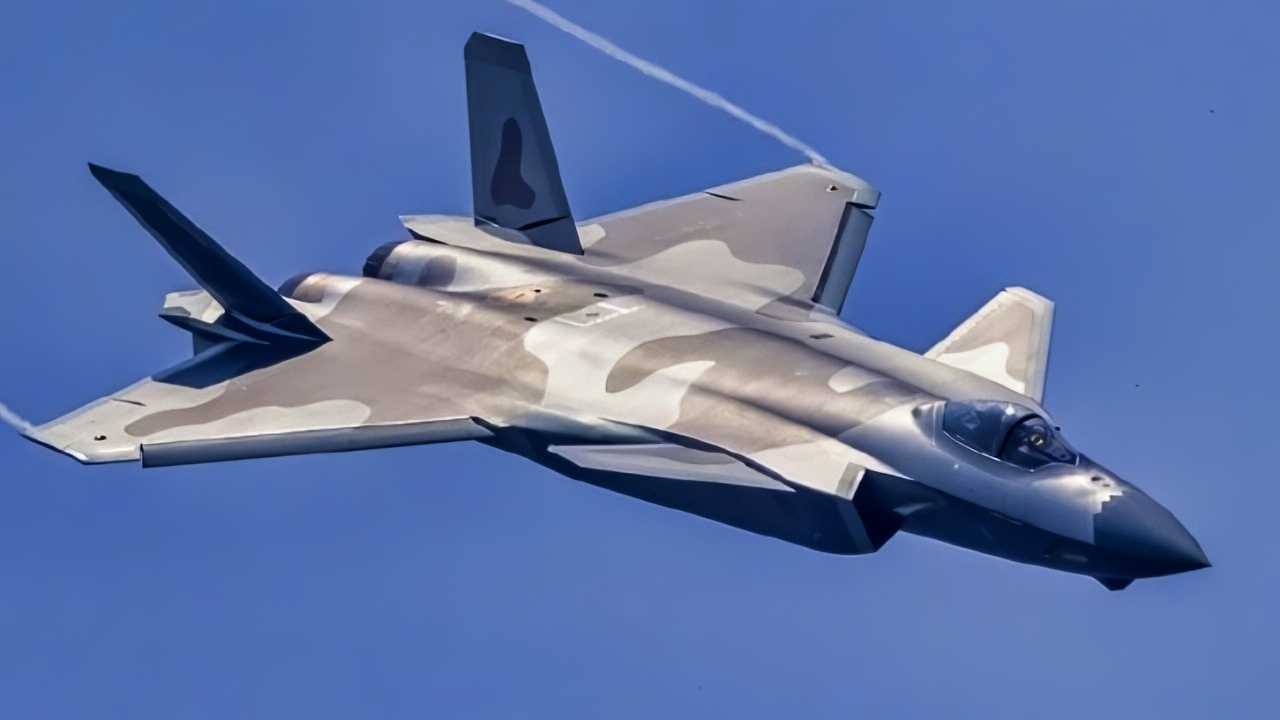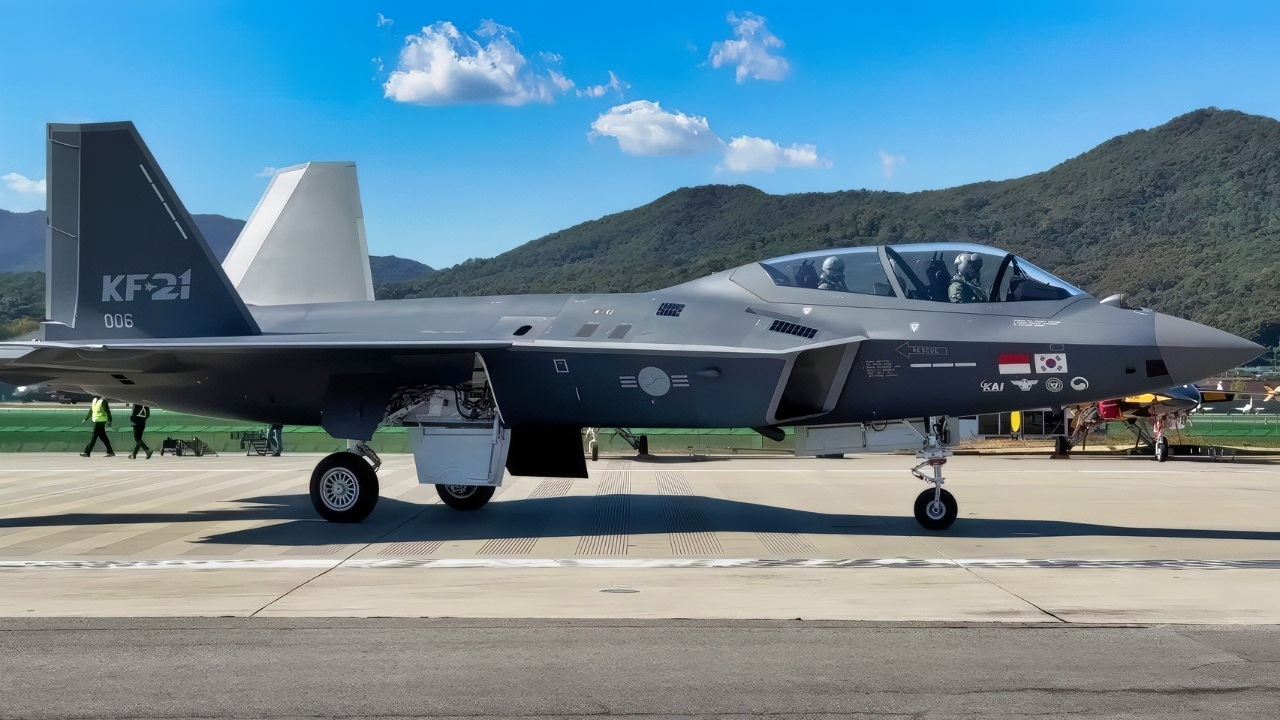Key Points and Summary – China is rapidly expanding its J-20 and J-35 stealth fleets, raising fears that U.S. and allied airpower could be outnumbered over the Indo-Pacific.
-The J-20 brings long reach, growing supercruise performance, and heavy missile loads, while the carrier-capable J-35 targets U.S. ships and regional bases.

China’s J-20 Stealth Fighter. Image Credit: Chinese Weibo/Screenshot.
-Yet Washington and its partners still field a deeper, more mature fifth-generation ecosystem built around the F-22, more than a thousand F-35s, and upcoming sixth-generation platforms.
-With Japan, South Korea, Australia, and Singapore all buying F-35s and training alongside U.S. forces, pilot quality, networking, and numbers still favor the alliance—for now.
How Will The US and Allies Handle China’s Growing J-20/J-35 Fleet?
The Chinese have been producing J-20 and J-35 stealth aircraft in increasing numbers.
The Chinese just celebrated the Chengdu J-20 “Mighty Dragon” historic milestone with over 300 stealth fighters now in PLAAF service, marking the largest fifth-generation fleet outside the United States and redefining the airpower balance across the Indo-Pacific.
China has produced 57+ J-35s thus far. Current estimates indicate an annual output of 70 to 100 units; however, other production estimates for the J-20 are expected to maintain a rate of 100 to 120 aircraft per year.
This has set off alarm bells across the oceans as aviation analysts worry that the US and our allies won’t be able to match stealth aircraft against the Chinese.
The J-20 Mighty Dragon
Like other stealth fighters, the J-20 stores its weapons in a storage bay. It has four beyond-visual-range (BVR) and within-visual-range (WVR) missiles. With internal fuel tanks, the J-20 can travel 1,100 nautical miles.
The J-20 has a high ceiling and can reportedly reach 65,000 feet. China has indigenously produced the Shenyang WS-10 afterburning engine, which provides 30,000 pounds of thrust that powers the J-20.

China J-20 Fighter. Image Credit: PLAAF/Chinese Air Force.
The J-20’s top speed is Mach 2.55 (1956 mph), according to the Chinese. It is capable of supercruise, flying supersonic without using fuel-intensive afterburners. The new WS-15 engine is reportedly now being produced and being utilized in the newer J-20 fighters.
Recently, a J-20 pilot of the People’s Liberation Army Air Force (PLAAF), Captain Yang Jucheng of the “Wang Hai” Brigade, claimed he overflew the entire island of Taiwan and was never once intercepted while touting the J-20’s stealth capabilities.
China’s Aircraft Carrier-based Fighter, The J-35
China’s J-35 is a carrier-based fighter built to fly off China’s aircraft carriers.
The J-35 traces its roots back to the Shenyang Aircraft Corporation’s FC-31, a prototype aircraft with some stealth features that first flew in 2012. A land variant of the J-35 is called the J-35A.
The FC-31 was initially conceived as an export stealth fighter but evolved into the J-35 as a test and research platform for a carrier-based fighter.
Around a decade later, the first iteration of the J-35 took flight. It featured folding wings and robust landing gear for tight storage and hard landings on aircraft carriers. China recently made its first-ever catapult takeoffs from its new carrier.
The Chinese Government-backed Global Times says the J-35 is quite different from its predecessor, the J-20, when discussing its arrival. The Chinese paper compares the J-20 to its J-35 and says its newer J-35 stealth fighter is lighter, faster, similar to an F-35, and engineered for “strong surface attack capabilities.”

J-20 with PL-15 Missile. Image Credit: Creative Commons.
“The J-35A has a different design than China’s first stealth fighter jet, the J-20. The J-20, with a canard wing configuration, is a heavy fighter jet with a focus on air superiority missions comparable with the US’ F-22, while the medium-sized J-35A uses a tailplane wing configuration similar to the US’ F-35 that also has strong surface attack capabilities,” The Global Times says.
The China Daily reported that Wang Yongqing, chief researcher at the Aviation Industry Corp of China’s Shenyang Aircraft Design and Research Institute, said the J-35A provides what he described as “systems coordination” or “multi-domain coordination” in combat.
“It [the J-35A] can lock on the targets, share the targets’ position with other weapon systems, such as surface-to-air missiles, and even use its own radar to guide other weapons to bring the targets down,” he told the state-run newspaper in an interview published on May 13.
More Capabilities Explained
“Our adversaries will definitely use their stealth aircraft or low-observable cruise missiles to penetrate our air defense networks,” Yongqing Wang explained, without naming any specific countries.
“The J-35A has significant advantages in terms of first detection, first strike, and securing operational advantages,” Wang said. He added that in combat against previous generations of aircraft, “the J-35A can remain outside the effective detection range of the enemy, achieving one-way transparency of the battlefield situation and possessing overwhelming advantages that disrupt traditional air combat patterns,” the Global Times states.
However, everything known about the J-35 variants is just what China is releasing. We don’t yet know the aircraft’s true capabilities, especially its stealth properties, but they are supposedly selling 41 J-35As to Pakistan.
Is It Time To Hit The Panic Button Yet?
In a word, no. While China’s numbers are skyrocketing, and the 300 J-20 fighters are indeed a formidable force, one has to remember that the US operates 187 F-22 Raptors and that over 1,200 F-35s have been built.

China J-20A Fighter in the Sky. Image Credit: Creative Commons.
While the F-22 is out of production, the new NGAD F-47 has already entered limited production. And in terms of production, the F-35 isn’t being outproduced.
Lockheed Martin is producing a stable rate of 156+ F-35s per year and aims to deliver 170–190 F-35s in 2025, due to a backlog of aircraft requiring software upgrades. In 2024, 110 F-35s were offered, and the stable production rate of 156+ is expected to continue.
US Allies Operate The F-35
Of course, not all F-35s are stationed in the Indo-Pacific region, but the numbers show that our allies are well-stocked with F-35s, which keeps deterrence high.
Japan already operates the F-35A, in addition to the US aircraft stationed there. The number of US F-35s fluctuates due to aircraft carrier deployments. And the Japanese Defense Forces have 147 F-35s ordered.
Japan is developing the sixth-generation Global Combat Air Program (GCAP) sixth-generation fighter.
South Korea operates about 40 F-35As as well as its own stealthy KF-21 Boramae fighters.

KF-21 Boramae Fighter KAI Image

KF-21 Fighter from South Korea. Image Credit: Creative Commons.
Australia has a fleet of 72 F-35A Lightning II aircraft, with the final one delivered in December 2024. This acquisition completes the initial commitment to equip three operational squadrons and a training squadron at RAAF bases Williamtown and Tindal.
There have been discussions about acquiring an additional 28 F-35A aircraft in the future, bringing their total to 100. Singapore is slated to receive 20 F-35s in early 2026.
China’s numbers are rapidly growing and should not be discounted. However, the stealth F-22s and F-35s are better aircraft than the Chinese J-20s and J-35s. The US is also soon to receive the sixth-generation F-47 stealth fighter as well as the naval F/A XX in the not-too-distant future.
Our Allied air forces continue to train hard in joint drills with the US. And the training and experience of US pilots are second to none.
About the Author: Steve Balestrieri
Steve Balestrieri is a National Security Columnist. He served as a US Army Special Forces NCO and Warrant Officer. In addition to writing on defense, he covers the NFL for PatsFans.com and is a member of the Pro Football Writers of America (PFWA). His work was regularly featured in many military publications.
More Military
Who Has the Fastest Hypersonic Missile? Russia, China, or the US?










